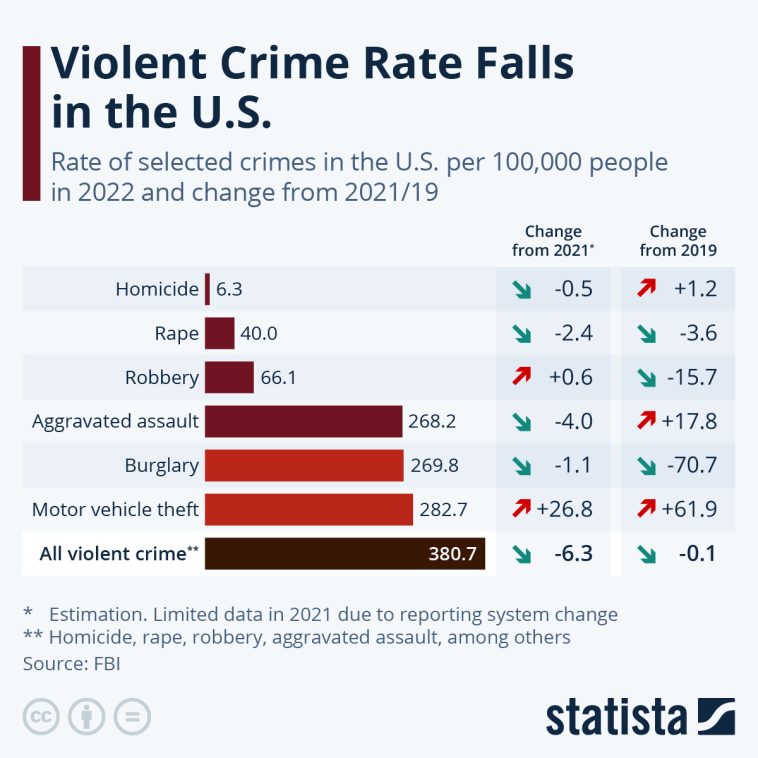Last year saw a notable reduction in violent crime across the nation, highlighted by significant statistics recently revealed by the Federal Bureau of Investigation (FBI). The data unveiled a considerable decrease in cases of murder and non-negligent manslaughter, demonstrating an almost 12% drop from 2022 to 2023 – marking the most significant decrease in years.
In addition to this, the number of reported rape incidents also saw a substantial reduction, with a decline of over 9%. Contrarily, hate crimes witnessed a less drastic fall, marking a decrease of less than 1%. On a national scale, violent crime took an estimated 3% dip, while property crime showed a decrease by approximated 2.4%.
As the 2024 presidential election looms, crime rates have escalated as one of the leading issues straddling the political arena. This has been chiefly spearheaded by Republican presidential nominee Donald Trump, who has strived to position crime as pivotal to the political discourse. He has highlighted increasing crime rates in his speeches, projecting his Democratic adversary, Kamala Harris, as being lax with crime.
Vice President Kamala Harris, fired back, debunking these allegations. The former California attorney general emphasized her rigorous approach towards crime. Despite the overall declining trends, there were some categories of crimes that ticked upwards from 2022 to 2023. Vehicle thefts were highlighted as such an area, with a significant rise of almost 13%.
The comprehensive report was based on crime statistics collected from 16,334 various law enforcement agencies throughout the nation. It constitutes data from a hefty 85% of agencies engaged in the FBI’s crime reporting system. The data intake also included inputs from major law enforcement bodies such as the New York and Los Angeles Police Departments.
However, the FBI-produced data is not without its caveats. It must be remembered that these numbers are preliminary; not every community was covered, and the data provided contains some unavoidable inaccuracies. Therefore, these statistics may not offer a completely precise picture of the recent crime reduction.
In its report, the FBI clarified that all city agencies covering populations of 1 million or more individuals provided a full year’s worth of data to the Bureau’s crime reporting initiative. Consequently, the report includes data from some of the largest cities in the country, a feature that previous reports lacked.
In a press teleconference, a high-ranking FBI representative refused to evaluate or speculate on the crime rate claims made by the two presidential hopefuls. Nevertheless, the representative staunchly defended the FBI’s data and its integrity, emphasizing the Bureau’s consistent methodological approach maintained over the years.
The issue of crime and its management continues to hold the spotlight in both presidential campaigns. Kamala Harris heavily leans on her background as a prosecutor to underline her initiatives in decreasing crime rates. There remains, however, a divide among the public over the vice president’s approach towards crime; some believe she was too rigorous.
Harris has also faced backlash for her former endorsement of the ‘defund the police’ movement, a sentiment she has since renounced. On the opposite side, Donald Trump presented his strategy for managing crime, defining his own distinct approach to the situation.
Trump, in accepting an endorsement from the Fraternal Order of Police, reiterated his support for local law enforcement’s use of stop and frisk tactics. It is noteworthy that these divisive tactics have been associated with increased instances of racial profiling.


